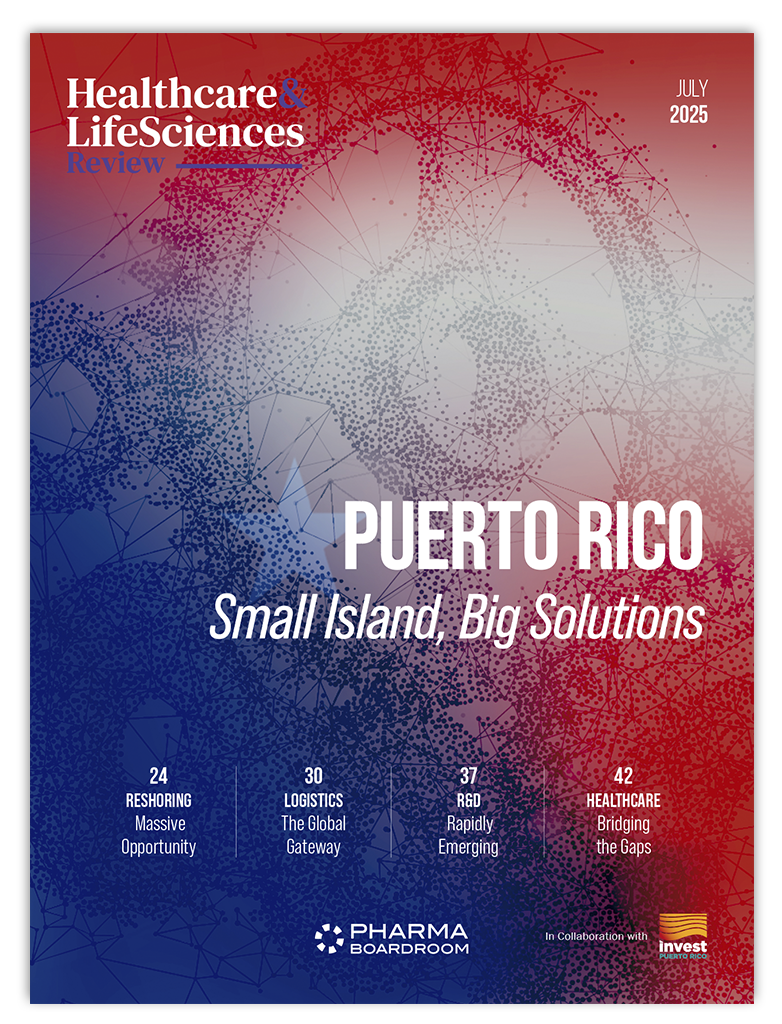Already a solid hub for biopharma manufacturing and logistics, Puerto Rico is moving to sharpen its position in the evolving US reshoring landscape and attract new investment. Under the banner “Made in Puerto Rico is Made in the USA,” Governor Jenniffer Gonzalez-Colon is promoting the island’s unique value as both a key player in the American supply chain and a competitive global manufacturing base.
“Made in Puerto Rico is Made in the USA”
In efforts to bring manufacturing back to the United States, President Donald Trump has amended trade policies and introduced mounting tariffs. These strategies have created supply chain uncertainties across multiple industries, including the life sciences, and once-stable manufacturing arrangements have become fraught with risk.
Industry leading companies are re-evaluating their supply strategies and some are taking steps to align with the federal government’s reshoring goals by building US production capacity, like Novartis and Eli Lilly with its USD 50 billion cash injection into American production sites.
Puerto Rico appears to be seizing the day, proactively promoting its manufacturing prowess and making moves to build on its existing capacity and expertise. A key recent action from the local government was the Executive Order issued by governor Jenniffer Gonzalez-Colon in March. Under the slogan “Made in Puerto Rico is Made in the USA” the order presents Puerto Rico as a viable option for manufacturing relocation to the US. “Puerto Rico is ready to welcome and expand multinational companies and continue consolidating its position as a key player in the national supply chain,” Gonzalez-Colon affirmed.
As the top pharmaceutical manufacturing location in the US, Puerto Rico has already positioned itself as a leading biopharma production and logistics hub. The island’s unique status as a US territory, strategic location near the mainland, attractive tax incentives and skilled workforce have attracted 54 FDA-approved manufacturing plants. Eleven of the world’s top pharma companies maintain manufacturing sites in Puerto Rico while over 30 medical device companies operate there.
With its manufacturing muscle, the governor argues, the island also has an important role to play in securing national supply chain resiliency. “The national security of the United States of America depends to a large extent on the strength of its supply chain. In the current global context, Puerto Rico plays a fundamental and strategic role in the American supply chain.”
Improving on Success
The key pillars of the governor’s strategy are the creation of a new task force under the direction of Sebastián Negrón-Reichard, secretary of the Puerto Rico Department of Economic Development and Commerce (DDEC), and a series of initiatives aimed at boosting Puerto Rico’s attractiveness.
Several of these plans are designed to enhance the experience of companies looking to set up shop in Puerto Rico. “This is a time for Puerto Rico to capitalise on what we do best—by improving areas where we can do better,” Negrón-Reichard told PharmaBoardroom in a recent interview. “By doubling down on what has made us successful historically, and focusing on improvements where needed, we can position Puerto Rico as a key player moving forward.”
These improvements include a “One-Stop Investment Window” aimed at providing companies with a centralised point of contact to streamline processes and a “Fast-Track Permitting Process,” which sets out to expedite the approvals. “[Puerto Rico’s permitting system] has long been a bottleneck that frustrates entrepreneurs, delays investment, and weakens our competitiveness,” said Negrón-Reichard, admitting the need for an upgrade.
Another area many of Puerto Rico’s government and business leaders see as critical for the island to maintain a competitive edge is its energy supply. “Energy remains one of the most pressing challenges, but we are making strides toward a more sustainable and reliable system,” affirmed Negrón-Reichard. Although energy was not mentioned in the recent decree, the DDEC secretary confirmed that “the governor has prioritised addressing both energy generation and distribution, with legislation passed to ensure flexibility in the current system while planning for future generations.”
Opening the Door to the US and the World
Puerto Rico’s governor has also put forward the idea of direct collaboration with the US Office of Trade and Manufacturing Policy to further foment reshoring efforts on the island. Her proposals include targeted incentives for companies relocating manufacturing from China, Mexico and Canada and accelerating federal approval processes for manufacturing facilities in Puerto Rico.
Within the context of the Trump administration’s reshoring efforts, Puerto Rico has presented its strategy as a way to boost US manufacturing. However, Puerto Rico is not a purely US-centred hub.
Currently shipping goods to over 120 countries, the territory is a significant actor in global supply circulation and managment, particularly in the biopharma sector. “Puerto Rico is becoming an increasingly important player in the global pharmaceutical industry,” confirms Sascha Herzig, president and CEO of logistics service provider E.T.H. Cargo. “Its role in life sciences and logistics is growing, and the infrastructure improvements in recent years are positioning the island as a critical hub.”
American pharma giants Pfizer and Amgen have had a manufacturing presence on the island for decades while companies like Johnson & Johnson MedTech recently expanded their Puerto Rican facilities. But ex-US firms have also created significant manufacturing operations within the territory, including India’s Aurobindo Pharma and Mexico’s Neolpharma.
With targeted incentives, regulatory streamlining, and a reinforced pitch to both US and global players, Puerto Rico is positioning itself to turn reshoring momentum into long-term competitive advantage. As global supply chains evolve and resilience becomes a strategic priority, the island’s established manufacturing muscle, improving infrastructure, and dual role as both US and global hub could make it a destination of choice for life sciences investment in the years ahead.



